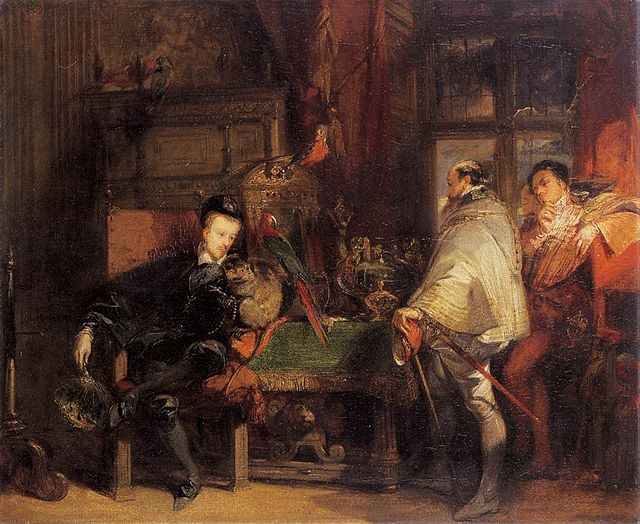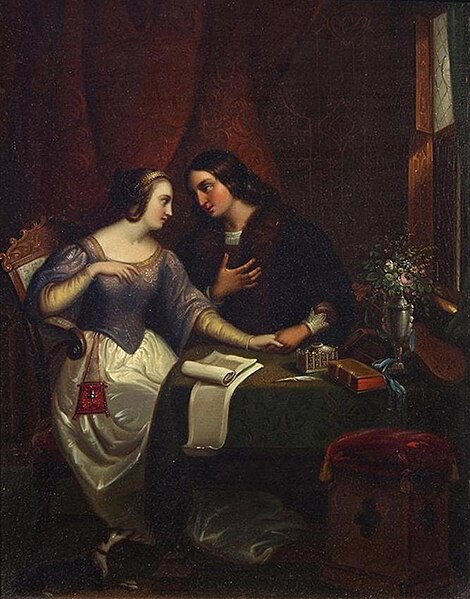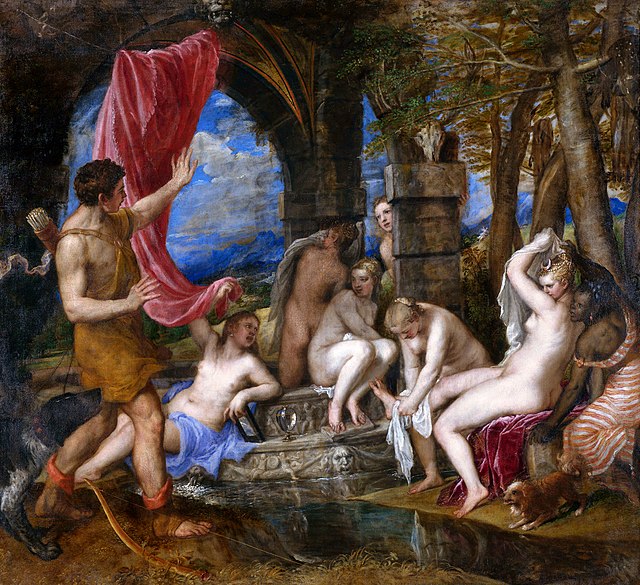Taking its name from medieval troubadours, the Troubadour Style is a rather derisive term, in English usually applied to French historical painting of the early 19th century with idealised depictions of the Middle Ages and the Renaissance. In French it also refers to the equivalent architectural styles. It can be seen as an aspect of Romanticism and a reaction against Neoclassicism, which was coming to an end at the end of the Consulate, and became particularly associated with Josephine Bonaparte and Caroline Ferdinande Louise, duchesse de Berry. In architecture the style was an exuberant French equivalent to the Gothic Revival of the Germanic and Anglophone countries. The style related to contemporary developments in French literature, and music, but the term is usually restricted to painting and architecture.

Pierre-Henri Révoil, René d'Anjou and Palamède de Forbin, c. 1827, a typically inconsequential anecdotal scene, in this case commissioned by a descendant of Forbin, whose features conveniently were recorded on a relief.
Richard Parkes Bonington, Henri III of France
Jean-Baptiste Goyet, Héloïse et Abailard, oil on copper, 1829.
Pharamond lifted on a shield by the Franks, by Pierre-Henri Révoil and Michel Philibert Genod, 1845
History painting is a genre in painting defined by its subject matter rather than any artistic style or specific period. History paintings depict a moment in a narrative story, most often Greek and Roman mythology and Bible stories, opposed to a specific and static subject, as in portrait, still life, and landscape painting. The term is derived from the wider senses of the word historia in Latin and histoire in French, meaning "story" or "narrative", and essentially means "story painting". Most history paintings are not of scenes from history, especially paintings from before about 1850.
Diana and Actaeon, Titian, 1556–1559, a classic history painting, showing a dramatic moment in a mythological story, with elements of figure painting, landscape painting and still-life.
Judas Returning the Thirty Silver Pieces by Rembrandt, 1629.
Jacques-Louis David's Oath of the Horatii, 1786, with a scene from ancient history.
Venus, Cupid, Folly and Time, Agnolo Bronzino, c. 1545. According to André Félibien allegory was the highest form of all history painting.








